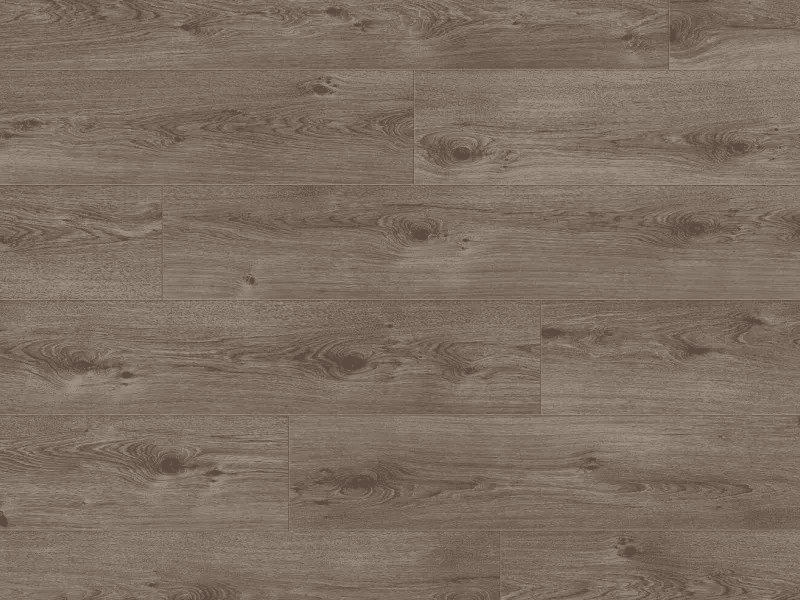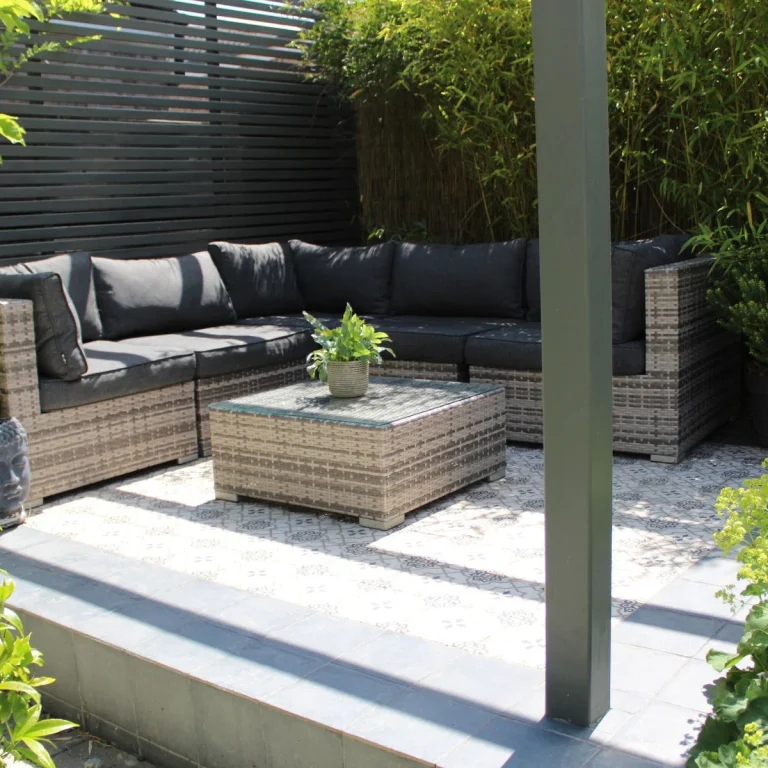Allergies can serve as a persistent source of discomfort, frequently aggravated by the environment established within our homes. Understanding the impact of allergies on indoor air quality is crucial for individuals seeking to enhance their living spaces through better flooring options. So, what is the best flooring for allergies?
This article examines the most effective hypoallergenic flooring options that can help mitigate allergens, identifies materials that should be avoided, and provides practical advice for reducing allergens in the home through eco-friendly products. Learn how implementing straightforward modifications can significantly benefit those who suffer from allergies.
What Are Allergies?
Allergies represent a hypersensitive response of the immune system to substances referred to as allergens. These allergens can include common irritants such as dust mites, pet dander, pollen, and mould.
The presence of these allergens can trigger a variety of symptoms, including sneezing, itching, and difficulty breathing, which significantly affect the quality of life for those who suffer from allergies.
Understanding the sources of these allergens is essential for mitigating their impact, particularly in indoor environments where exposure may be continuous, potentially leading to chronic health issues.
How Allergies Affect Indoor Air Quality
Allergies significantly affect indoor air quality, which is frequently compromised by allergens such as dust mites, mould, and pet dander, as well as pollutants like volatile organic compounds (VOCs) and formaldehyde.
Deteriorated indoor air quality can aggravate allergy symptoms, resulting in discomfort and health complications for individuals with allergies. Factors such as dust accumulation and the presence of moisture can further facilitate the growth of allergens within residential settings.
Therefore, it is crucial to understand how indoor environments can be optimised to enhance air quality through allergen reduction and hypoallergenic choices.
The Best Flooring for Allergies
Selecting appropriate flooring is essential for individuals with allergies, as specific types of flooring can aid in reducing allergens and improving indoor air quality.
The most suitable flooring options for allergy sufferers include hypoallergenic solutions such as hardwood, bamboo, cork, and tiles. These materials significantly minimise dust accumulation, help in allergen reduction, and are more manageable to clean than traditional carpets.
Along with their aesthetic benefits, these flooring options possess sustainable qualities and low volatile organic compound (VOC) levels, making them environmentally friendly choices that promote a healthier indoor environment.
a. Hardwood Flooring
Hardwood flooring is widely recognised as one of the most effective hypoallergenic flooring options due to its inherent ability to resist allergens and minimise dust accumulation. Unlike carpets, hardwood surfaces can be easily maintained through routine cleaning practices, making them an advantageous choice for households with allergy sufferers. Hardwood does not harbour dust mites or pet dander, thereby contributing to a healthier indoor environment and improving overall indoor air quality.
One of the significant benefits of hardwood flooring is its smooth surface, which facilitates effortless cleaning. Regular sweeping and occasional mopping are generally adequate to remove dirt and allergens. This maintenance routine not only preserves the flooring’s attractive appearance but also enhances air quality by reducing the potential for allergens to circulate.
The aesthetic appeal of hardwood flooring is undeniable. Its natural beauty and wide range of finishes can complement any home design, creating a warm and inviting atmosphere.
- Hardwood floors can last for decades with proper care, making them a cost-effective investment.
- When considering maintenance, utilising appropriate wood cleaners and avoiding excessive moisture will ensure longevity.
In conclusion, hardwood flooring serves as a stylish and health-conscious option for individuals seeking relief from allergy symptoms.
b. Tile Flooring
Tile flooring represents an excellent hypoallergenic option for individuals sensitive to allergens, as its hard surface does not trap dust, pet dander, or other irritants. Additionally, tile is inherently moisture-resistant, rendering it less susceptible to mould growth when compared to traditional flooring alternatives. Routine cleaning facilitates easy maintenance, ensuring that tile floors remain free from allergens and thereby promoting improved indoor air quality for allergy sufferers.
Along with its durability, tile flooring provides an impressive array of aesthetic options, allowing homeowners to choose from various colours, patterns, and textures that complement their interior design.
- Whether selecting classic ceramic, sleek porcelain, or luxurious natural stone, the choices available cater to diverse preferences.
- Tile’s ability to resist wear and tear makes it suitable for high-traffic areas, ensuring that its beauty endures over time.
Furthermore, the hard surface of tile flooring not only simplifies cleaning but also aids in reducing allergens, making it a sensible choice for families and individuals seeking healthier living environments.
c. Vinyl Flooring
Vinyl flooring is a widely recognised hypoallergenic flooring option that offers a diverse array of designs while effectively reducing allergens within the home. Its non-porous surface provides excellent moisture resistance, helping to prevent the growth of mould and other allergens. Moreover, many vinyl products are characterised by low volatile organic compound (VOC) levels, making them a safer choice for individuals with allergies who are concerned about indoor air quality.
This remarkable type of flooring not only enhances the aesthetic appeal of living spaces but also serves practical functions that benefit homeowners. One of the key attributes of vinyl flooring is its versatility; it is available in a variety of styles, including those that mimic wood and stone, thereby integrating seamlessly into any décor.
Additionally, the ease of maintenance is a significant advantage. Regular sweeping and occasional mopping are generally sufficient to maintain its appearance, which is crucial for households aiming to minimise allergens.
In summary, the advantages of vinyl flooring include the following:
- Versatility: Available in numerous designs to complement any style.
- Maintenance: Simple cleaning routines effectively reduce allergens.
- Moisture Resistance: Aids in the prevention of allergens such as mould.

See product: Karndean Van Gogh Rigid Core Grey Brushed Oak (Sale)
d. Laminate Flooring
Laminate flooring serves as a highly effective hypoallergenic option that significantly reduces allergens in the home, owing to its smooth surface, which does not trap dust or pet dander.
Many homeowners value the aesthetic appeal that laminate flooring offers, as it effectively imitates the appearance of hardwood or stone at a fraction of the cost. When considering laminate flooring, it is essential to evaluate the advantages and disadvantages it presents in relation to various factors. Its ease of maintenance is a notable benefit; routine sweeping and periodic mopping can help maintain its fresh and clean appearance.
Advantages:
- Cost-effective
- Diverse styles
- Hypoallergenic
Disadvantages:
- Less moisture-resistant
- Potential for noise
- May fade over time
While laminate flooring effectively minimises allergens, proper installation and maintenance are crucial in preserving its benefits for individuals with allergies. Ultimately, laminate flooring represents a commendable choice for those seeking a blend of style, cleanliness, and practicality in their living environments.

See product: Elka 8mm V-Groove Sienna Oak
e. Cork Flooring
Cork flooring represents an eco-friendly and hypoallergenic flooring solution that combines comfort and practicality, particularly for individuals with allergies, due to its sustainable credentials and natural materials.
Its unique composition, derived from the bark of cork oak trees, highlights its sustainable characteristics, as the harvesting process does not harm the tree, allowing for natural regeneration over time. Beyond its ecological advantages, this flooring option significantly enhances indoor air quality and fosters a healthier living environment by reducing dust, allergens, and other irritants commonly associated with traditional flooring materials, supporting health impacts.
- Comfortable underfoot, cork flooring offers a plush texture that is gentle on joints, making it an ideal selection for households with children and elderly members.
- Its thermal insulation properties contribute to maintaining a comfortable temperature, thereby reducing the need for excessive heating or cooling.
In summary, cork flooring is not only a practical investment for those prioritising comfort and sustainability but also a valuable choice for individuals seeking to adopt a healthier lifestyle. Additionally, options like bamboo flooring and marmoleum flooring offer sustainable and allergen-free alternatives for eco-conscious homeowners.
f. Linoleum Flooring
Linoleum flooring is a hypoallergenic flooring solution composed of natural materials such as linseed oil, wood flour, and jute, making it an ideal choice for individuals with allergies. Its non-toxic characteristics and low VOC emissions contribute to enhanced indoor air quality, while its smooth surface minimises the accumulation of allergens, including dust and pet dander. Linoleum is not only durable but also environmentally friendly, appealing to consumers who prioritise sustainability. Natural linoleum and marmoleum flooring options provide excellent durability and aesthetic preferences for those mindful of their environmental impact.
This type of flooring promotes a healthier living environment and exhibits remarkable longevity, capable of withstanding the demands of daily use. Its resistance to wear and tear ensures that it remains both functional and visually appealing over the years. The production process of linoleum significantly mitigates its environmental impact, as it is derived from renewable resources and is biodegradable at the end of its lifecycle.
- Hypoallergenic benefits: Due to its inherent properties, linoleum flooring actively reduces the likelihood of allergies, making it suitable for households with children and pets.
- Maintenance considerations: Maintaining linoleum in optimal condition involves straightforward cleaning practices, including regular sweeping and occasional mopping with a mild detergent.
Ultimately, this flooring option not only fulfills aesthetic requirements but also aligns with a responsible ecological footprint, enabling consumers to make informed choices for their homes. Moreover, it benefits from eco-designed floor principles and adhesive safety, ensuring a safe and sustainable living space.
The Worst Flooring for Allergies
When selecting flooring for individuals with allergies, certain options are considered less favourable due to their tendency to harbour allergens and exacerbate allergy symptoms. For example, carpeting, rugs, and mats can trap dust mites, pet dander, and other allergens, rendering them less suitable for residences occupied by allergy-prone individuals.
It is crucial to identify flooring options to avoid in order to create a healthier indoor environment that reduces potential allergy triggers.
a. Carpeting
Carpeting is often regarded as one of the least suitable flooring options for individuals with allergies due to its propensity to trap allergens, including dust mites, pet dander, and pollen. The fibrous composition of carpets creates an optimal environment for the accumulation of these irritants, which can lead to heightened allergy symptoms and respiratory challenges. Additionally, carpets have the ability to retain moisture, thereby exacerbating the growth of mould and mildew. Consequently, regular cleaning, such as through hypoallergenic carpeting practices and carpet cleaning, becomes imperative for maintaining a healthy indoor environment.
For individuals who are sensitive to airborne particles such as pollen and spores, the presence of carpets can indeed pose a considerable challenge, as routine foot traffic can disturb these concealed irritants. To mitigate these adverse effects, it is essential to implement dedicated and frequent cleaning practices. These may include vacuuming with HEPA filters, steam cleaning, and potentially engaging in professional deep cleaning. Flooring installation experts often recommend these methods as part of a comprehensive flooring maintenance strategy. However, it is important to note that while these methods may alleviate some concerns, they can also be quite labour-intensive.
Alternative flooring options, such as hardwood, laminate, or tiles, offer healthier environments for allergy sufferers by presenting smooth surfaces that do not harbour allergens. These materials, which include engineered wood and solid wood, can significantly enhance indoor air quality, ensuring that the living space remains a sanctuary rather than a source of discomfort. It is advisable for those affected to carefully evaluate their flooring choices, taking into account both aesthetic considerations and health implications in their decision-making process.
b. Rugs and Mats
Rugs and mats, much like carpeting, can significantly contribute to the accumulation of allergens within a home, presenting challenges for individuals with allergies. These textile surfaces often trap dust, pet dander, and other allergens, complicating efforts to maintain a clean indoor environment. Regular and thorough cleaning is imperative to minimise dust accumulation and reduce flooring triggers associated with these flooring options.
Neglecting proper upkeep can lead to a buildup of contaminants, which may exacerbate respiratory issues and overall health concerns. The materials utilised in these coverings can play a crucial role in allergenic responses. For instance, woven fibres such as wool are recognised for their durability; however, they can also retain moisture, fostering the growth of mould and mildew, which are well-known for aggravating allergies. Conversely, synthetic materials, while easier to clean, may emit volatile organic compounds (VOCs) that can adversely affect indoor air quality.
- Cleaning Challenges: Regular vacuuming is essential, but it is important to note that not all vacuums effectively eliminate deeply embedded particles.
- Environmental Considerations: Homeowners may wish to consider hypoallergenic options that are more resistant to dust mite infestations.
- Health Monitoring: Vigilance in monitoring for allergy symptoms that may arise from flooring choices is advisable for homeowners.
Creating a clean environment while selecting appropriate materials can significantly enhance the quality of life for individuals suffering from allergies.
c. Natural Fiber Flooring
Natural fibre flooring, although often lauded for its eco-friendliness, can present challenges for individuals with allergies due to its propensity to retain allergens and moisture. Materials such as jute and sisal can harbour dust mites and other irritants, potentially exacerbating allergy symptoms if not adequately maintained. Regular cleaning practices are essential to address these concerns; however, many individuals may find that hard flooring alternatives, such as cement flooring and vinyl, present a more appropriate solution for minimising allergens.
The maintenance of natural fibre flooring requires the implementation of various strategies to ensure cleanliness and reduce allergy risks. To effectively combat allergens, it is advisable to engage in routine vacuuming using a HEPA filter vacuum, as this equipment captures smaller particles that conventional vacuums may overlook. Employing a damp mopping technique can also aid in dislodging dust without saturating the material, thereby preventing mould growth.
- It is prudent to spot-clean spills immediately to mitigate moisture retention.
- The use of air purifiers can enhance overall indoor air quality.
- Encouraging regular professional cleanings can provide a more thorough approach to maintenance.
While natural fibres may possess a rustic appeal, they do not inherently exhibit the hypoallergenic properties found in certain synthetic alternatives, such as laminate or vinyl, which offer a surface that resists allergens more effectively. Additionally, engineered wood and vinyl provide sound insulation and radiant heating benefits. In the ongoing discussion regarding flooring options, individuals with allergies may find reassurance in selecting materials specifically designed to minimise allergen retention.
Tips for Reducing Allergens in the Home
Reducing allergens in the home is essential for enhancing the quality of life for individuals affected by allergies. Several effective strategies can be implemented to achieve this aim. These include consulting Consumer Reports and home improvement resources to evaluate flooring costs, surface area coverage, and durable flooring qualities that meet specific allergy prevention needs.
Regular vacuuming, the use of air purifiers, and frequent cleaning of bedding can substantially decrease the presence of dust mites and other allergens in living spaces. By adopting these practices, one can foster a healthier indoor environment, alleviate allergy symptoms, and improve overall air quality.
1. Vacuum Regularly
Regular vacuuming is recognised as one of the most effective methods for reducing allergens within the home, particularly in areas with carpeted flooring. By utilising a vacuum cleaner equipped with a HEPA filter, homeowners can efficiently capture dust mites, pet dander, and other allergens that may accumulate on various surfaces. This routine cleaning practice not only contributes to a cleaner indoor environment but also reduces the risk of allergy symptoms for sensitive individuals.
Along with preventing allergy triggers, it is essential to identify the appropriate tools and strategies necessary for optimal vacuuming. Consider the following best practices for effectively reducing allergens:
- Choose the Right Vacuum: Opt for a vacuum model specifically designed for allergen removal, preferably one that features a HEPA filter.
- Regular Schedule: Establish a vacuuming schedule of at least once or twice a week, with increased frequency in high-traffic areas and zones frequently occupied by pets.
- Maintain Your Equipment: Regularly inspect and replace filters as needed, and clean or change the vacuum bag to ensure sustained suction power.
By implementing these strategies, one can ensure that the home remains a healthier environment, significantly minimising allergen accumulation and enhancing overall well-being.
2. Use Air Purifiers
Utilising air purifiers represents an effective strategy for enhancing indoor air quality and reducing allergens within the home, particularly for individuals who suffer from allergies. Air purifiers that are equipped with HEPA filters are capable of effectively capturing airborne allergens such as dust mites, pollen, and pet dander, thereby contributing to a cleaner and healthier breathing environment. Strategically positioning these devices in key areas of the home can further augment their efficacy.
The advantages of these devices extend beyond mere allergy relief; they also play a significant role in promoting overall health by reducing exposure to harmful pollutants and irritants. When selecting an air purifier, it is prudent to consider options such as activated carbon filters for odour control or UV-C light technology for germ neutralisation.
- Choosing the appropriate purifier may depend on various factors, including the size of the room and the specific allergens present.
- Regular maintenance, including filter replacement and unit cleaning, is vital to ensure optimal performance.
- For maximum benefits, placing the air purifier in high-traffic areas or bedrooms can lead to considerable improvements in air quality.
Incorporating these devices into daily routines presents a straightforward approach to enhancing the well-being of all household members.
3. Keep Pets Out of Bedrooms
Maintaining a pet-free environment in the bedroom is a practical recommendation for reducing allergens, particularly pet dander, within the home. Pets can transport allergens on their fur and skin, leading to an accumulation in sleeping areas that adversely affects indoor air quality. By establishing designated pet-free zones, especially in bedrooms, individuals who suffer from allergies can substantially diminish their exposure to irritants and enhance their overall comfort.
This straightforward yet effective approach not only provides immediate relief but also plays a vital role in improving the overall atmosphere of living spaces. It is essential to recognise that limiting pet access can contribute to the creation of a healthier environment, especially for individuals with sensitivities.
To further strengthen efforts to minimise allergens, the following practices are recommended:
- Regular grooming and bathing of pets to eliminate dander and dirt.
- Utilising air purifiers equipped with HEPA filters to effectively capture airborne allergens.
- Implementing rigorous cleaning routines, including vacuuming with pet-specific attachments.
- Establishing designated areas for pets that include washable bedding and toys.
- Considering hypoallergenic pet breeds, which are known to produce fewer allergens.
By integrating these strategies, home environments can be transformed into havens of comfort, significantly benefiting those affected by allergies.
4. Wash Bedding Frequently
Washing bedding frequently is a critical component in reducing allergens and enhancing indoor air quality for individuals suffering from allergies. Dust mites, which thrive in bedding, can be effectively eliminated through regular washing at high temperatures. This practice helps to alleviate allergy symptoms for sensitive individuals. Incorporating frequent washing into household routines fosters a healthier sleeping environment and promotes overall well-being.
It is important to wash not only bedding but also other textiles, such as curtains, pillowcases, and blankets that can harbour allergens like dust, pet dander, and pollen. Regular cleaning of these items contributes to a cleaner home and can significantly lower allergen levels.
The following best practices are recommended for effective cleaning:
- Use hot water (at least 54°C) for washing bedding.
- Dry bedding on a high heat setting to eliminate any remaining allergens.
- Consider utilising allergen-proof covers on pillows and mattresses.
- Wash smaller items, such as pillowcases, weekly, while larger items, such as duvets, may be cleaned fortnightly or monthly.
By consistently adhering to these methods, individuals can significantly improve their sleep quality and overall well-being, leading to a healthier and more comfortable home environment.
Selecting the right flooring can make a significant difference in reducing allergens and improving indoor air quality. Hypoallergenic options like hardwood, tile, vinyl, and laminate are excellent choices to help minimize dust, pet dander, and other irritants in your home. Regular maintenance, such as vacuuming and damp mopping, further enhances the benefits of allergy-friendly flooring.
For the best results, it’s important to choose high-quality materials and ensure proper installation. That’s where TEKA Flooring comes in. Visit our Flooring Store in Peterborough to explore an exquisite collection of flooring options that redefine elegance and quality. Let our experts guide you through a world of possibilities!
Read also:
































